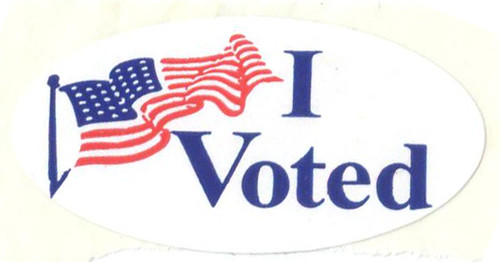
“I Voted Sticker (Hi-Res)” by miscellaneaarts is licensed under CC BY-NC-SA 2.0
November 2019 saw a number of states hold elections for local government. While Kentucky, Louisiana, Virginia, Mississippi and New Jersey all held elections for state offices, Kentucky, Louisiana and Mississippi also held statewide elections – most prominently gubernatorial races. Though the off-year state-focused elections have come to be seen as a barometer to measure the environment of the electorate in terms of national trends, this actually is explicitly against the original purpose of these elections.
Though all these states adopted this cycle in different periods, a common thread winds through all the decision-making for it. Officials wanted to separate state politics from federal politics. The theory and logic goes that by having the state office races held in a different year from races for federal offices, national issues would not intrude and the races would not become nationalized.
Results in Kentucky and Louisiana may especially support this logic. At the federal level, both states are seen as reliably deep-red. Despite this fact, and President Trump’s attempts to turn both states into referendums on himself, Democrats won the marquee, governor races, albeit by narrow margins.
Kentucky saw incumbent Attorney General, Andy Beshear oust incumbent Governor Matt Bevin in Kentucky. Going into the race, Bevin faced a tough re-election. Numerous controversies including sparking a dramatic feud with teachers in Kentucky had resulted in low approval ratings for him. Meanwhile, Beshear, the son of a popular former Governor of Kentucky, distanced himself from national Democrats.
In Louisiana, a breed of conservative Democrats have been able to hang on despite the withering of this brand of Democratic lawmakers at the federal level. The state has the only Democratic governor in the Deep South in the form of John Bel Edwards. After being forced into a runoff earlier this year, Edwards fended off a challenge by Republican businessman Eddie Rispone.
Republicans found solace in Mississippi. The GOP gubernatorial nominee, Lt. Governor Tate Reeves, emerged victorious over Democratic Attorney General, Jim Hood. Though like the other two gubernatorial races, Mississippi was surprisingly close for a state widely seen as ruby red at the federal level.
President Trump – who enjoys high approval ratings in all three states – sought to nationalize the races and turn them into referendums on himself. The Republicans running in each state eagerly sought to tie themselves to the president, who held rallies in each state before the elections. Despite the original purpose of having these elections separate from federal election, to distance them from federal politics, many have interpreted the results in Louisiana and Kentucky as defeats for the President.
Meanwhile, Virginia may have offered the most thorough victory to Democrats. They swept to victory, taking both chambers of the Virginia Legislature for the first time since 1998. Coupled with incumbent Governor Ralph Northam, the Democrats now control both the legislature and the executive.
Democratic leaders in Virginia have already begun mapping out legislative priorities with this opportunity. The party is widely expected to pass some form of gun control legislation and possibly ratify the Equal Rights Amendment. This result will place Democrats in control of redistricting after the 2020 census.
A curious side note in this story is if Virginia does ratify the Equal Rights Amendment, it would become the 38th state to do so – the requisite number for the amendment to take effect. This is far from a decided outcome, however, given that when Congress imposed deadlines, it placed a deadline upon ratification.
In New Jersey, Democrats retained control of the State Assembly but lost the only State Senate seat on the ballot in the 1st District, which had previously been held by now Congressman Jeff Van Drew up to his election to Congress in 2018.
Despite the stated function of these reforms to uncouple them from federal politics, many use these state results as a barometer to interpret the political atmosphere in terms of the 2020 presidential election.
Though others have cautioned against reading these races as reflective of the broader political atmosphere, many have noted in the days since the elections the persistence of a hemorrhaging of suburban voters by the Republican Party. This trend was discernible in the 2018 federal midterm elections that lead to the Democrats gaining more than thirty seats and taking control of the House of Representatives. This is a potentially ominous sign for the GOP heading into 2020.
